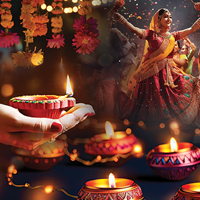Diwali: Lighting The Diya Within
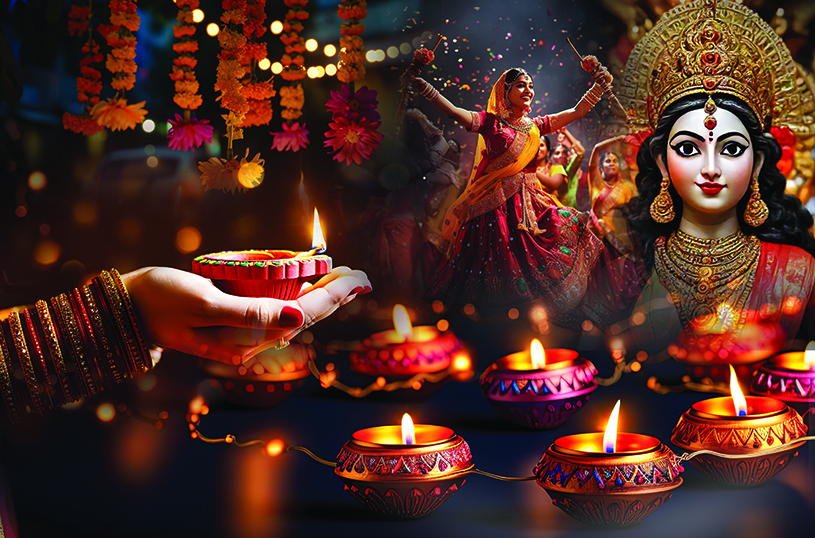
BK Sister Shivani
The Indian and spiritual community in North America was truly privileged to host BK Sister Shivani last month. It was a spiritual experience that many of us will cherish for the rest of our lives. BK Sister Shivani addressed different topics in each city she visited, and each of her lectures carried a profound spiritual message. In South Florida, she spoke on the topic of “Healing the Heart, Releasing the Hurt.” In simple and relatable language, she explained that all of us experience hurt at some point in our lives. She offered insights on how to control our minds and let go of pain.On Sunday, September 22, she read the Murli in front of the South Florida Brahma Kumaris students. The Murli is an oral study that is read to Brahma Kumaris students in centers around the world each morning. Typically, only Brahma Kumaris students attend these sessions, but Aruna and I were fortunate enough to be invited by Sister Waddy to participate.
During the reading, Sister Shivani also spoke about the upcoming Hindu festivals, Navratri and Diwali. While we have all read and heard numerous articles and lectures on Diwali, this was the first time I had heard the spiritual aspects of the festival in such depth. I was deeply impressed and filled with joy listening to Sister Shivani speak about our Hindu festivals. I asked Sister Waddy if Sister Shivani could write an article on Diwali for Desh Videsh.To my delight, the very next morning, I found in my inbox an article titled “Lighting the Diya Within,” written by Sister Shivani. I am incredibly grateful to both Sister Shivani and Sister Waddy for this wonderful experience.
Raj Shah
Managing Editor
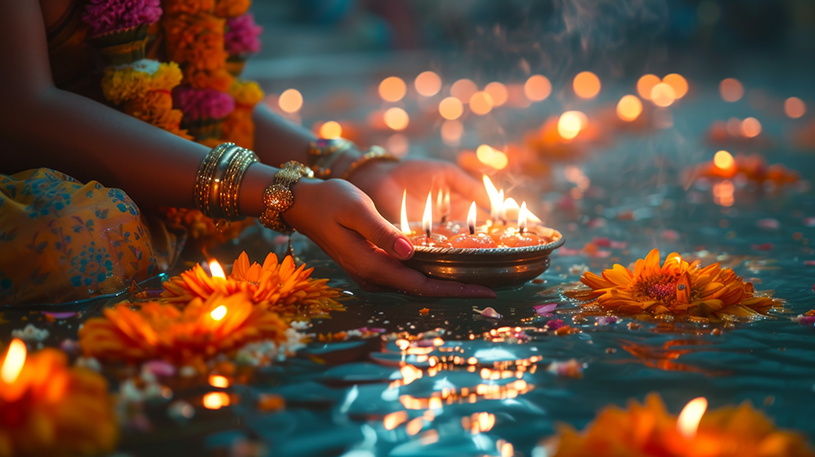 As the vibrant festivities of Navratri and Diwali unfold, they bring with them a profound message of spiritual awakening and self-realization. People observe fasting during Navratri as a vow to overcome vices like anger, criticism, and irritation. Consuming Sattvic food reminds us that everything we read, listen to, eat, and drink needs to be highly vibrational to purify the mind and body.
As the vibrant festivities of Navratri and Diwali unfold, they bring with them a profound message of spiritual awakening and self-realization. People observe fasting during Navratri as a vow to overcome vices like anger, criticism, and irritation. Consuming Sattvic food reminds us that everything we read, listen to, eat, and drink needs to be highly vibrational to purify the mind and body.
Jagran is the call to awaken to a righteous way of thinking and living. At its core, Navratri celebrates invoking the divine feminine, the ‘Ashta Bhuja Dhari’ Maa Shakti, the embodiment of 8 inner powers within each soul. Each power, when awakened, leads us towards self-realization.
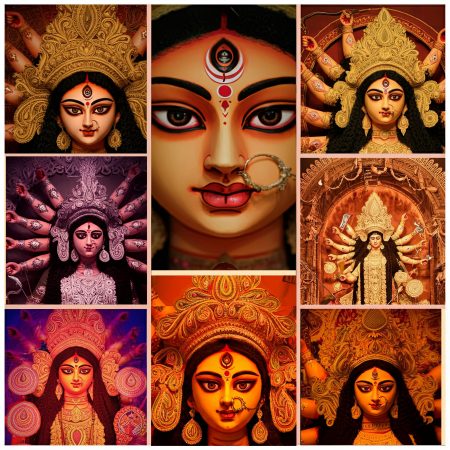 Parvati Devi: Power to Detach: Withdraw from dependencies, give unconditional love.
Parvati Devi: Power to Detach: Withdraw from dependencies, give unconditional love.- Maa Durga: Power to let go: To release past hurts.
- Jagadamba: Power to tolerate: Nurture ourselves and others.
- Santoshi Maa: Power to Accept: Accept everyone and embrace contentment.
- Gayatri Devi: Power to Discern: Distinguish between right and wrong.
- Saraswati Maa: Power to Decide: Make accurate choices.
- Kali Maa: Power to Face: Confront and finish anything that is immoral.
- Lakshmi Maa: Power to Cooperate: Support and empower people selflessly.
Together, these 8 powers help us finish the inner ‘Ravan’ of 10 vices: lust, anger, greed, attachment, ego, jealousy, hatred, deceit, stubbornness, and laziness. This victory is celebrated as Dussehra, where ‘Dasa’ means ten and ‘Hara’ means to destroy.
Dussehra is soon followed by Diwali, the festival of light, traditionally honoring “Sri Ram’s return to his kingdom from exile. In fact, Sri Ram’s journey symbolizes our path from darkness to light, from ignorance to wisdom. It reminds us that by overcoming our vices, we restore our natural state of peace, love, and happiness. Diwali transcends mere festivities, with each ritual carrying a deeper meaning reflecting our journey back to our true, divine self.”
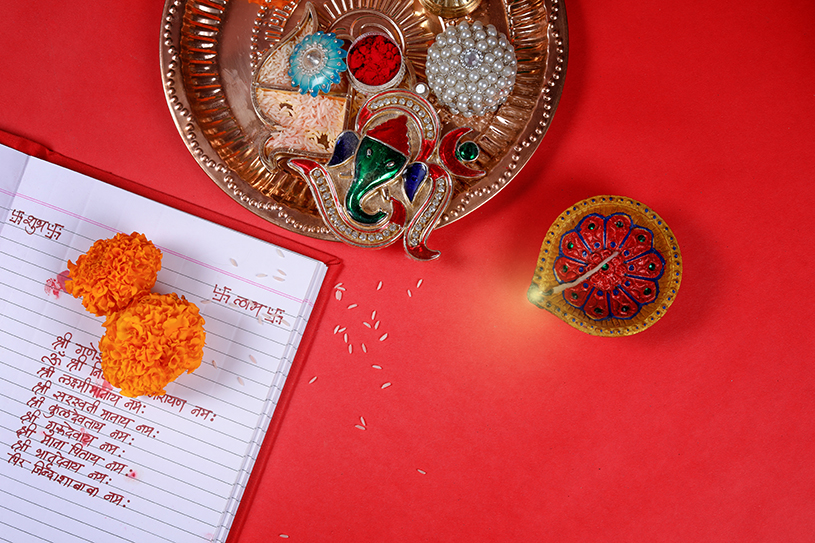 Cleaning the House: Just as we sweep away dust and cobwebs, we must clear out accumulated emotional stains of hurt, anger, resentment, or stress. This inner cleansing requires intentional mental reframing. For instance, replacing lingering thoughts like “Why did they wrong me?” with “It was their perspective, their mood. It was a Karmic account. It is over now.”
Cleaning the House: Just as we sweep away dust and cobwebs, we must clear out accumulated emotional stains of hurt, anger, resentment, or stress. This inner cleansing requires intentional mental reframing. For instance, replacing lingering thoughts like “Why did they wrong me?” with “It was their perspective, their mood. It was a Karmic account. It is over now.”
Wearing New Clothes: New attire and household items symbolize the renewal that follows cleansing. As we clean our mind to release old patterns, we learn new ways of thinking, speaking, and behaving. Old sanskars of anger, hurt, and criticism give way to understanding, compassion, respect, forgiveness, and acceptance.
Exchanging Gifts: The most meaningful gift we can offer each other is not material but spiritual—blessings and good wishes—as our constant offering, not just during the festival. Giving everyone a symbolic “Gift Card” that says, “From this moment onward, no matter what you say or do, I respond only with pure thoughts, pure feelings, and blessings.”
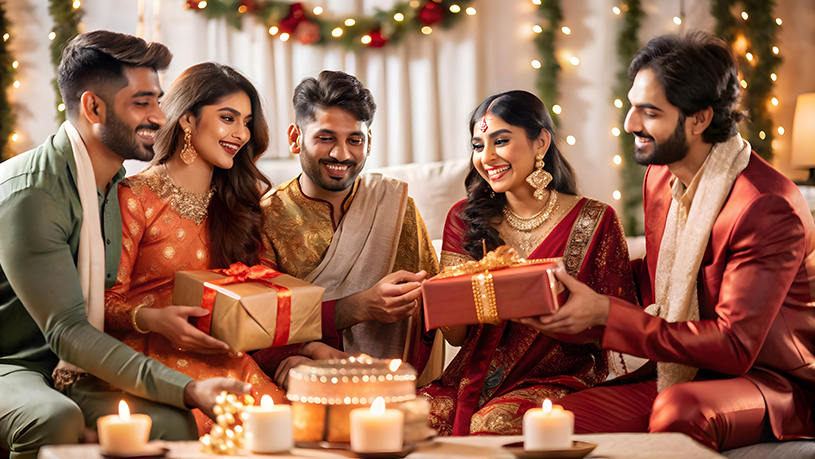
Savoring Sweets: Sweets are prepared with love and offered to God, allowing His blessings to infuse them with divine energy. These sweets remind us to “sweeten” our words as well. Let our mantra be: “I speak less, I speak softly, I speak sweetly. My words are filled with kindness and the sweetness of love.”
Lighting Diyas: “In Hindi, ‘Diya’ translates to ‘Dena’, meaning ‘to give’. Its clay form symbolizes our physical body, and the wick within it stands as a metaphor for the soul, patiently awaiting to be illuminated by the oil of wisdom:” “I am a soul. Love, peace, and happiness are my original qualities. I am a giver of these qualities to everyone.” Our hands, like those of Sri Lakshmi Ji, should always extend blessings. Sri Lakshmi embodies divinity and the true “Mann ka Lakshya,” the aim of life, which is to give endlessly.

New account books: Just as businessmen close old financial accounts and open new ledgers, we must do the same with our karmic accounts. It’s time to clear the debts of past hurt, unresolved conflicts, and any lingering negativity with others. No matter how deep-rooted these issues may be or how heavy they weigh upon us, we have the power to close those accounts and begin anew, filling our karmic ledger with acceptance, forgiveness, and love.
Bhaiya Dooj: Applying a Tilak reminds us to remain in constant awareness: “I am a pure soul, and so is everyone else.” When we maintain this soul-to-soul connection, our interactions transcend the barriers of roles, status, relationships, position, or age. Ego dissolves, expectations finish, and we let go of desires and dependencies.
This shift in consciousness becomes a powerful force, and through our collective awareness, we pave the way for a new, harmonious era—the Golden Age—where divinity, harmony, and prosperity for all are a natural way of being.
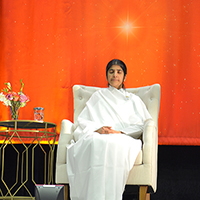 About the Author
About the Author
Since 1996, BK Sister Shivani has been a practitioner and teacher of Rajyoga Meditation, which is at the heart of the Brahma Kumaris World Spiritual Organization’s teachings. First telecast in 2007, her widely popular television show aimed at self-transformation, Awakening With Brahma Kumaris, For over a decade, the show has empowered individuals from all walks of life. Viewers have overcome mental stress, depression, addictions, low self-esteem, and unhappy relationships by taking personal responsibility for their emotions. The World Psychiatric Association has appointed her as a Goodwill Ambassador since 2017. The prestigious Nari Shakti Puraskar, the highest civilian honor for women in India, awarded BK Shivani in March 2019 for her role in transforming human behaviors.

